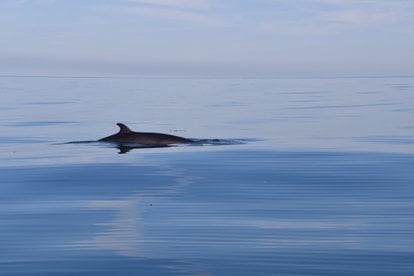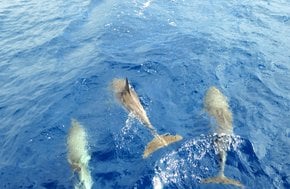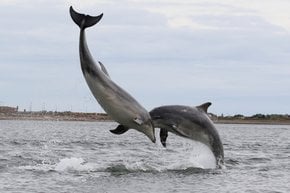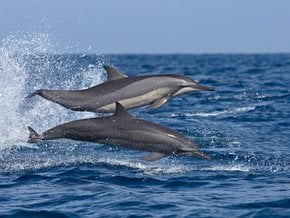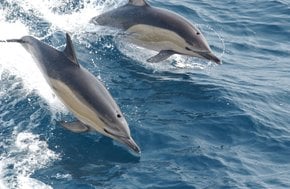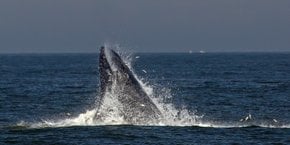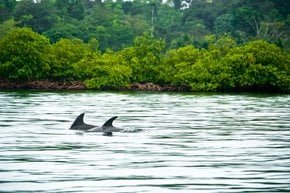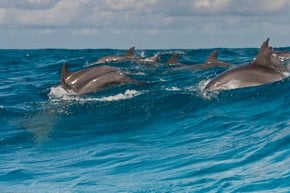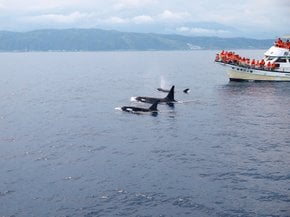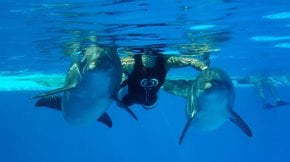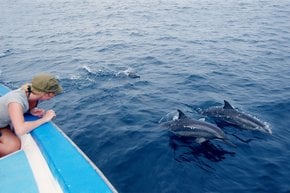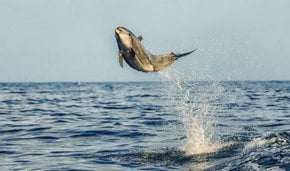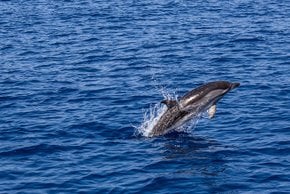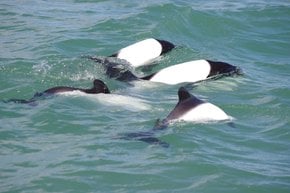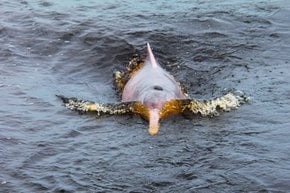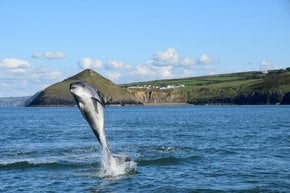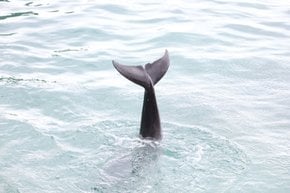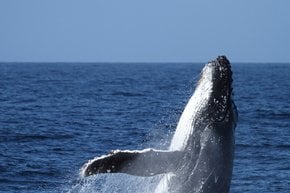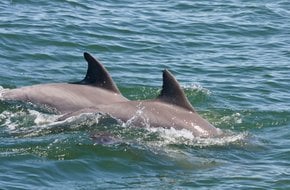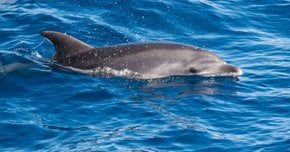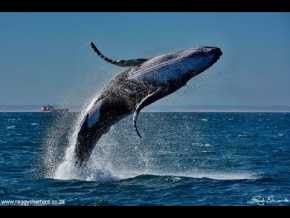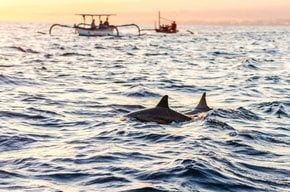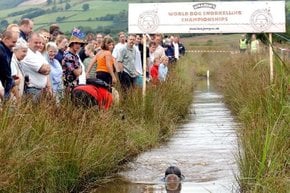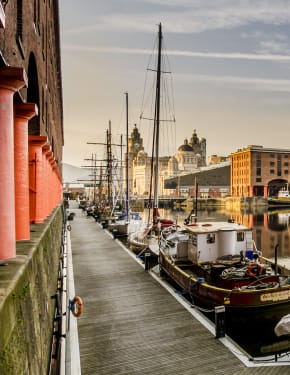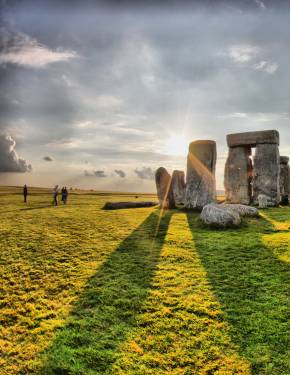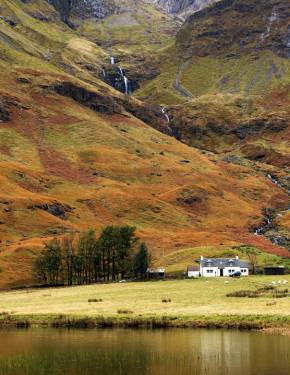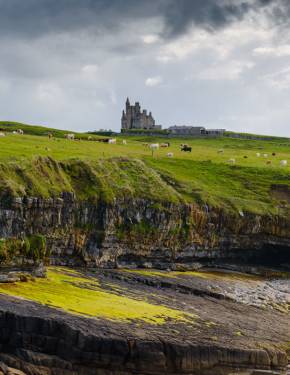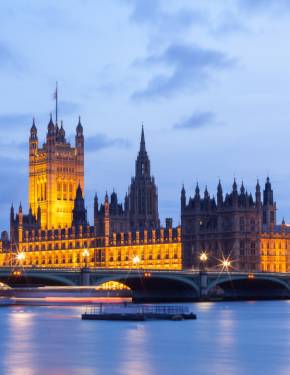Dolphin & Whale Watching in Wales 2025-2026
Pembrokeshire, or the Celtic Deep, is the favourite feeding ground for sea mammals in Wales
Best time: May–February
Wales is a prime destination for marine wildlife enthusiasts, particularly those interested in spotting whales and dolphins in their natural habitats. The Welsh coast, with its diverse marine life, offers a unique opportunity to observe a variety of species in stunning surroundings.
Whale & Dolphin Watching Season
The ideal whale and dolphin watching season in Wales typically spans from late spring to early autumn. According to wildlife experts, whales are most commonly spotted between May and September, with June being a peak month for sightings. Dolphins, on the other hand, can be seen year-round, but their visibility increases in the summer months when both resident and migrating populations are active. Risso’s dolphins, often referred to as “winter dolphins,” are frequently observed from August through February, especially along the Pembrokeshire coast.
Best Places for Whale Watching
Wales offers several key locations where whale sightings are more likely, though whale encounters remain less predictable compared to dolphins. Pembrokeshire’s coastal waters, declared a Site of Special Scientific Interest (SSSI), are known for occasional sightings of minke and fin whales. Strumble Head, located on the northern coast of Pembrokeshire, is a hotspot for marine life. Whale sightings can be a matter of luck, with minke whales and, less frequently, sei and orca whales, sometimes passing through during the warmer months.
Best Places for Dolphin Watching
Dolphins are a more reliable sight along the Welsh coast, particularly in Cardigan Bay. Over 100 resident bottlenose dolphins live year-round in this area, making it one of the best places in the UK for dolphin watching. Cardigan Bay’s protected waters, stretching from Poppit Sands to Ramsey Sound near St. Davids, offer prime opportunities for spotting bottlenose dolphins, harbor porpoises, and even the occasional Risso’s dolphin. In summer, migrating dolphins join the resident population, increasing the chances of multiple sightings, sometimes even pods of up to 500 dolphins.
Watching Tours and Price Range
Wales offers a variety of guided whale and dolphin-watching tours, particularly along the scenic coastlines of Pembrokeshire and Cardigan Bay. These tours typically operate from spring through early autumn, providing visitors with the chance to witness both resident and migratory marine species. The cost for these tours generally ranges from £20 to £60 per person, depending on the duration of the excursion.
Some tours provide intimate experiences, allowing participants to observe dolphins, whales, and other marine life in their natural habitats. For those seeking a more immersive adventure, certain operators offer the opportunity to join marine researchers on boat trips, where guests can not only observe dolphin behavior but also listen to their underwater communication through specialized equipment. These experiences give travelers a deeper insight into the rich marine biodiversity of the Welsh coastline.
Location and Infrastructure
The Welsh coast is easily accessible from several towns and cities, with New Quay and St Davids being popular departure points for wildlife tours. St Davids, the UK’s smallest city, is located about two hours from Cardiff by car, making it a convenient starting point for visitors. Additionally, New Quay, with its quaint seaside charm, offers both boat tours and scenic walks along the coast. For those looking to explore further, the surrounding Pembrokeshire Coast National Park provides a wealth of natural beauty, including rugged cliffs, sandy beaches, and rich biodiversity.
The Most Commonly Spotted Species
Wales is home to a variety of marine species, though dolphins are by far the most frequently seen. Bottlenose dolphins, known for their playful behavior, are common in Cardigan Bay, while Risso’s dolphins, with their distinctive white scars, are a rarer but exciting sight during the winter months. Other species occasionally spotted include minke whales, fin whales, and basking sharks. Harbor porpoises are also a frequent sight along the coast, especially around Strumble Head and Fishguard Bay.
Tips for Whale & Dolphin Watching
To increase your chances of successful sightings, consider the following tips. Early morning and late afternoon are the best times for spotting dolphins, as they are often more active during these periods. Clear, calm days improve visibility, while rough seas may make it harder to spot wildlife. Bring binoculars and be prepared to spend some time waiting, as sightings can be unpredictable. Choose eco-friendly tours that prioritize marine conservation and respect the natural habitat of these magnificent creatures. By following these recommendations and choosing the right time and location, visitors to Wales can enjoy an unforgettable experience, witnessing some of the ocean’s most majestic animals in their natural environment.

